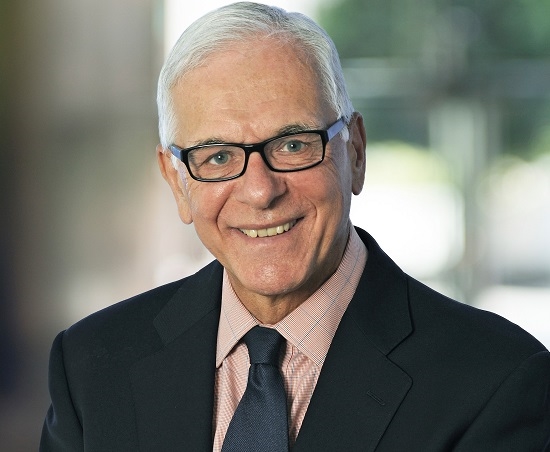The evolving role of intermediaries in the financial industry

By Dr. Alpay Soytürk, chief regulatory officer at Spectrum Markets
The term disruption understates how fundamentally tech has shaken up the financial industry. On the client side, digital natives have been joined by an older generation. Increasingly frequent shocks, such as financial crises or COVID-19, have contributed to greater waves of migration into digital spaces. At the supplier level there is a whole new landscape.
The development on the supplier side and the playing field for intermediation has much to do with technological progress. Where, due to a digitised service, the need for human interaction decreases, the client’s loyalty towards the provider of the service will go down with it. A better service or more attractive conditions elsewhere will be enough to make the client change provider.
In the trading business, the picture is no different. Established brands compete with start-ups for the most efficient applications and business models. Traditionally, there was the business of bringing buying and selling interests of clients to a market where these would match the relevant opposite interest and incurring fees for that service. Fee models may have varied but were basically dependent on the size and number of trades.
The rise of zero commission brokers has changed the situation radically. In the U.S. retail market, for example, the classic brokerage model has largely vanished. In the EU, the recently determined ban on payments for order flow (PFOF) is likely to decelerate this trend. PFOF is the practice of brokers being paid for their clients’ order flow, which allows these brokers to offer trading at no cost.
This PFOF business model had been criticised even before the enactment of MiFID II<1>, which, among other things, introduced stricter rules for firms regarding the avoidance of conflicts of interest, inducements, and best execution. Critics argue that PFOF constitutes a violation of these MiFID II regimes. Where brokers may route a client order to the market-maker offering the highest fee rather than seeking the best execution conditions for this order, this would be against the rules regarding the avoidance of conflicts of interest and against the best execution obligations. The counterargument is that, for the retail client, the overall fee savings would more than compensate for the potential execution disadvantages. That alone would reduce trading barriers for new client groups and younger investors in particular, thereby opening up new sources of liquidity and therefore contributing to narrower spreads.
In addition, there is the inducements argument against PFOF. According to MiFID II, monetary and non-monetary inducements are allowed to be retained under certain circumstances. First, the services provided must not be of portfolio management or independent advice. Second, the inducements are designed to enhance the quality of the relevant service to the client. Third, firms retaining them must abide by a comprehensive and transparent disclosure regime. Obviously, EU legislators concluded that the small print in the brokers’ terms and conditions hasn’t been recognised to a sufficient extent by retail investors.
The end of PFOF will definitely force zero-commission brokers to adapt their business models. However, it will not necessarily mean they will disappear. In terms of cost-efficiency, they still benefit from a narrower product range and a more limited services set-up, which many retail clients consider sufficient. However, this is just one example of how dynamic the changes for intermediaries in the field of trading have become.
While the PFOF ban has not been digested yet, parts of the industry won’t have to wait very long for the other shoe to drop. Also, at the beginning of this year, within its initiative to introduce new rules to strengthen market data transparency<2>, the European Council agreed on adopting a European consolidated tape. Consolidated tape is colloquial term for a platform or technology that gathers multiple markets’ trading information and consolidates this in one price feed. This can be introduced for various classes of financial instruments and can offer pre-trade and/or post-trade data. The EU has now adopted the plan to set up consolidated tapes for bonds, equities, ETFs, and derivatives. The consolidated tape for bonds and derivatives will include post-trade data as close to real-time as technically possible. For the equities and ETFs tape, trading venues will have to provide post-trade data and real-time best bid and offer (EBBO) prices and volumes.
Although pre-trade data is not yet included – ESMA<3> is mandated with assessing its feasibility by mid-2026 – the EU says it aims to give all types of investors transparent access to market data. It also expects the consolidated tape to improve competition between trading venues by attracting orders to trading facilities with better prices and better liquidity, thereby leading to EU capital markets becoming more attractive.
The emergence of zero-commission brokers and the consolidated tape wouldn’t have been possible without some degree of technological progress. This does not consider the effects of technological leaps such as distributed ledger technology. In this context, it’s not unrealistic to assume that the providers of aftermarket services will be the next group of intermediaries to face significant structural changes. Blockchain technology could make execution and settlement a near-simultaneous process. If there is no time lag between execution, checking the seller’s account for the availability of the security sold and the buyer's account for being sufficiently funded, clearing will become a less necessary discipline. With today’s book entries’ waterfall process becoming redundant due to the blockchain’s immediacy, classic settlement services may become superfluous, too.
Within this ever-accelerating market dynamism, it looks as though the retail investor has the most to gain. There has been a lot of discussion about the degree of access enabled by technology that has allowed the retail investor to level-up capital market participation, and debate over which factor induced which. Irrespective of this question, retail demand and the coming and going of crises will remain the only constant for a long time to come.
<1> Directive 2014/65/EU, the Markets in Financial Instruments Directive
<2> https://www.consilium.europa.eu/en/press/press-releases/2024/02/20/mifir-and-mifid-ii-council-adopts-new-rules-to-strengthen-market-data-transparency/
<3> The European Securities and Markets Association
Found this useful?
Take a complimentary trial of the FOW Marketing Intelligence Platform – the comprehensive source of news and analysis across the buy- and sell- side.
Gain access to:
- A single source of in-depth news, insight and analysis across Asset Management, Securities Finance, Custody, Fund Services and Derivatives
- Our interactive database, optimized to enable you to summarise data and build graphs outlining market activity
- Exclusive whitepapers, supplements and industry analysis curated and published by Futures & Options World
- Breaking news, daily and weekly alerts on the markets most relevant to you



